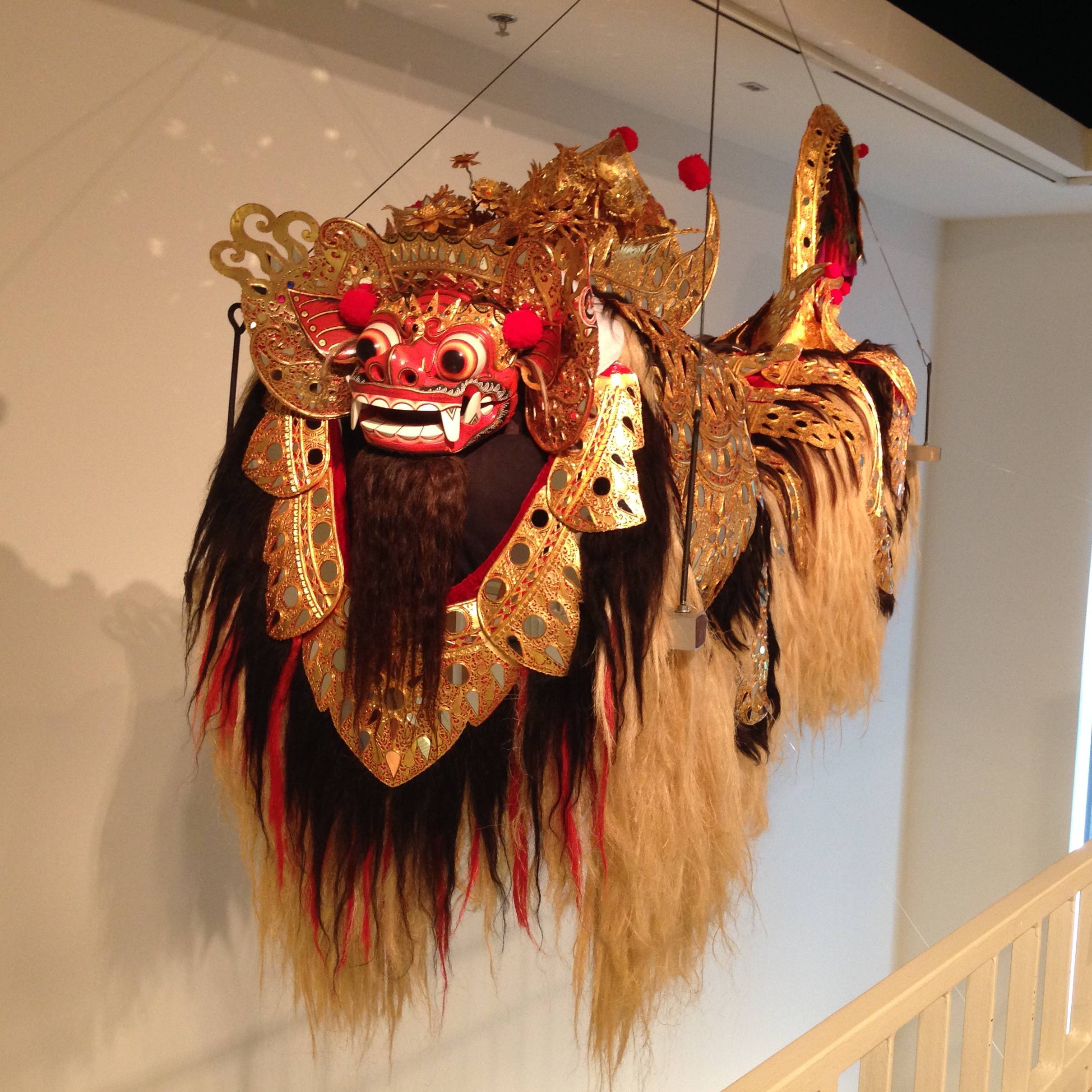While my usual impulse as a townie during Move-In Weekend is to stay as far away from campus as possible, my visit to the Spurlock Museum last Saturday made me glad I overcame those instincts. Located just across the street from the Krannert Center for the Performing Arts, the museum pursues a mission of helping to “interpret the diversity of cultures through time and across the globe.” With objects on display ranging from katsina dolls to colonial currency to musical instruments from Africa, the Spurlock should have something to appeal to everyone’s interests.

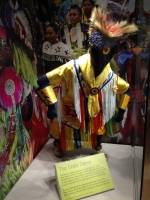 The museum has five main galleries, each devoted to a different part of the world. After visiting the small “Central Core Gallery”, which draws attention to how certain themes recur across cultures, most visitors will choose to go to one of the two first floor galleries first: the Laubin Gallery of American Indian Cultures or the Workman Gallery of Ancient Mediterranean Cultures. These galleries hold a life-size replica of a Sioux tipi and a not-so-life-size replica of the Acropolis, as well as statues, costumes, and a host of intriguing smaller artifacts. My personal favorites of these were the “War Record of One Bull”, a drawing on animal hide that depicts the chief’s memories of Little Big Horn, and a bowl with a 3D baby Hercules strangling serpents at the bottom of it. I only wish my own crockery were that interesting.
The museum has five main galleries, each devoted to a different part of the world. After visiting the small “Central Core Gallery”, which draws attention to how certain themes recur across cultures, most visitors will choose to go to one of the two first floor galleries first: the Laubin Gallery of American Indian Cultures or the Workman Gallery of Ancient Mediterranean Cultures. These galleries hold a life-size replica of a Sioux tipi and a not-so-life-size replica of the Acropolis, as well as statues, costumes, and a host of intriguing smaller artifacts. My personal favorites of these were the “War Record of One Bull”, a drawing on animal hide that depicts the chief’s memories of Little Big Horn, and a bowl with a 3D baby Hercules strangling serpents at the bottom of it. I only wish my own crockery were that interesting.
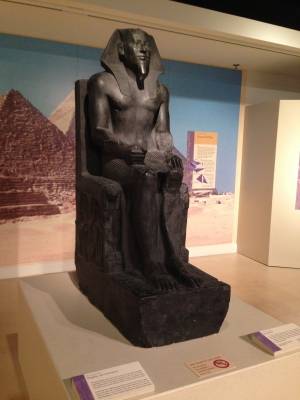 Climbing the curving staircase to the second floor takes you to the Workman Gallery of Asian Cultures, the Symonds Pyatt Gallery of European Cultures, the Faletti Gallery of African Cultures, and the Leavitt Gallery of Middle Eastern Cultures. (The latter two share a space.) This is where you can check out some Egyptian hieroglyphics, find out who “Barong Ket” is, try your hand at playing an African xylophone, and appreciate that your job (probably) doesn’t require you to wear anything as heavy as that suit of 15th century European armor.
Climbing the curving staircase to the second floor takes you to the Workman Gallery of Asian Cultures, the Symonds Pyatt Gallery of European Cultures, the Faletti Gallery of African Cultures, and the Leavitt Gallery of Middle Eastern Cultures. (The latter two share a space.) This is where you can check out some Egyptian hieroglyphics, find out who “Barong Ket” is, try your hand at playing an African xylophone, and appreciate that your job (probably) doesn’t require you to wear anything as heavy as that suit of 15th century European armor.
All five of the galleries hold an impressive array of both replicas and original artifacts with a good mix of larger and smaller objects. Part of the fun of the museum is walking into a gallery and immediately being drawn to the biggest, most prominent objects, only to discover as you explore further that many of the smaller artifacts are just as (if not more) fascinating. This isn’t a museum devoted to only the ancient past — many of the objects displayed were created fairly recently and the museum includes information about how beliefs and practices have evolved over time.
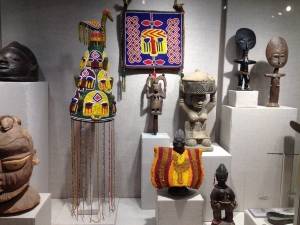 Most cases containing multiple objects have nearby binder pages visitors can flip through to look for detailed information about anything that particularly catches the eye. Though at times flipping through the pages can be a bit cumbersome, I did like that more information about almost anything that interested me was close at hand. I picked up several tidbits of information that were new to me and would probably pick up even more on a second visit.
Most cases containing multiple objects have nearby binder pages visitors can flip through to look for detailed information about anything that particularly catches the eye. Though at times flipping through the pages can be a bit cumbersome, I did like that more information about almost anything that interested me was close at hand. I picked up several tidbits of information that were new to me and would probably pick up even more on a second visit.
As the binder pages might suggest, for the most part the museum is pretty low-tech, with a focus on the artifacts themselves rather than on flashy videos or interactive displays. There is one interactive video station in the Mesopotamian Cylinder Seal exhibit that was very affirming following my correct identification of various Mesopotamian monsters. (Yes, I can find the man with goats for feet!) The lack of flashy technology elsewhere isn’t really a drawback, though, as the quiet atmosphere lends itself well to a slow and relaxing stroll through the collection where you can easily concentrate on the artifacts. The museum does have an extremely thorough website where you can take a virtual tour of the building or look at items from the collections that may not currently be on display. Hopefully in the future they’ll be able to create ways for visitors to know about and easily access that website content while inside the museum itself.
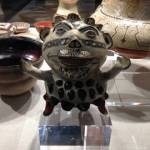 It took me about an hour and a half to wander through all five galleries, so the Spurlock is probably somewhere to plan to spend an hour or two rather than an entire day or even a full morning or afternoon. Since admission is free (or $3 if you make the suggested donation), though, it’s definitely worth the trip to campus to stop by and see the collections. I was excited to see that an exhibit on a 1913 University of Illinois-sponsored exploration mission to Greenland is opening in October. The museum also hosts a number of talks and other events throughout the year on topics related to its mission, so it’s smart to keep an eye on its calendar to see what’s coming up.
It took me about an hour and a half to wander through all five galleries, so the Spurlock is probably somewhere to plan to spend an hour or two rather than an entire day or even a full morning or afternoon. Since admission is free (or $3 if you make the suggested donation), though, it’s definitely worth the trip to campus to stop by and see the collections. I was excited to see that an exhibit on a 1913 University of Illinois-sponsored exploration mission to Greenland is opening in October. The museum also hosts a number of talks and other events throughout the year on topics related to its mission, so it’s smart to keep an eye on its calendar to see what’s coming up.
The Spurlock Museum is located at 600 S. Gregory St. in Urbana and is open from 12-5 p.m.Tuesday, 9 a.m.-5 p.m. Wednesday-Friday, 10 a.m.-4 p.m. Saturday, and 12-4 p.m. Sunday.








